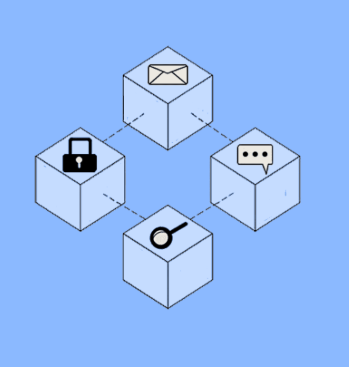- What is Blockchain Technology?
- What is Steps to Adding a New Block?
- What is Used to Lock the Block on Blockchain?
- What is the Second Criteria Needed to Add a Block?
- How Blockchain is Used in Bitcoin?
- How Bitcoin Transactions Are Verified?
- What Makes Blockchain Safe?
- What is the Safest Blockchain Technology Ever?
- Final Thoughts

Everyone from your tech-savvy uncle to your meme-loving friend has talked about Bitcoin, and may even know what a blockchain is. But do you know what the special features of this technology are? What makes it so secure?
Today, we are going to illustrate how Bitcoin uses blockchain, keeping cryptocurrency as one of the safest technologies in the digital realm.
What is Blockchain Technology?
A blockchain is what you can refer to as a shared notebook, it’s accessible to everyone. Every new transaction fills an empty page known as a block in that notebook, with a new ‘block’ as a page being added for every new transaction made.
Once a page is filled and added to the notebook, it cannot be changed or altered in any shape or form. This unchangeable feature of the block makes it tamper-proof.
What is Steps to Adding a New Block?
- Someone makes a transaction.
- The eligible amount of money goes into a block.
- The block’s information gets verified by countless computers (nodes/miners).
- Once verification is complete, the block is added to the chain.
What is Used to Lock the Block on Blockchain?
Block locking goes through a series of processes. Step one is each block getting locked using a cryptographic hash. A unique key is generated for every block. The data in these blocks contains only the block’s data.
Here’s the smart part: each block contains the hash of the previous block. If someone tries to modify one block, it disrupts the entire chain.
The entire system becomes exceedingly immune to threats and hacks.
What is the Second Criteria Needed to Add a Block?
For a new block to be added, the following two steps must be completed:
- The transaction must be legitimate (no double spending).
- A secure agreement must be reached between nodes (consensus).
This consensus can be achieved through:
- PoW (Proof of Work): Computers compete to solve a complex puzzle (used by Bitcoin).
- PoS (Proof of Stake): Users deposit coins to participate in validation (used by Ethereum 2.0, etc.).
How Blockchain is Used in Bitcoin?
The on-chain world of finance started with Bitcoin.
Every transaction in Bitcoin is stored in a block. These blocks are verified and added to the chain, forming a public, decentralized network.
This is how Bitcoin eliminates fraud without relying on banks.
How Bitcoin Transactions Are Verified?
- User transfers Bitcoin to another wallet.
- The transaction is broadcast to the network.
- Miners group transactions and create a new block.
- Miners solve a cryptographic puzzle to validate the block.
- Once a solution is found, the transaction is confirmed.
Bitcoin doesn’t need a third party to be trusted — just code.
What Makes Blockchain Safe?
- 🔒 Decentralization – No central point of control.
- 🔑 Encryption – Every block is sealed with encryption.
- 🔁 Immutability – Once added, blocks cannot be changed.
- 👥 Consensus – Changes require agreement across the network.
Blockchain enhances its security several times over using these principles.
What is the Safest Blockchain Technology Ever?
Launched in 2009, Bitcoin’s blockchain remains the most secure, with the highest hash power thanks to its massive network of miners. It has never been successfully hacked.
Other secure blockchains include Ethereum, Solana, and Avalanche — but Bitcoin remains the standard.
Final Thoughts
Providing security, transparency, and trust — blockchain isn’t just a trend. It’s the foundation of cryptocurrency. Bitcoin aims to make global access to digital money simple and powerful, removing the need for banks or borders.
Now that you understand consensus, blocks, and hashes, it all begins to fit together.
